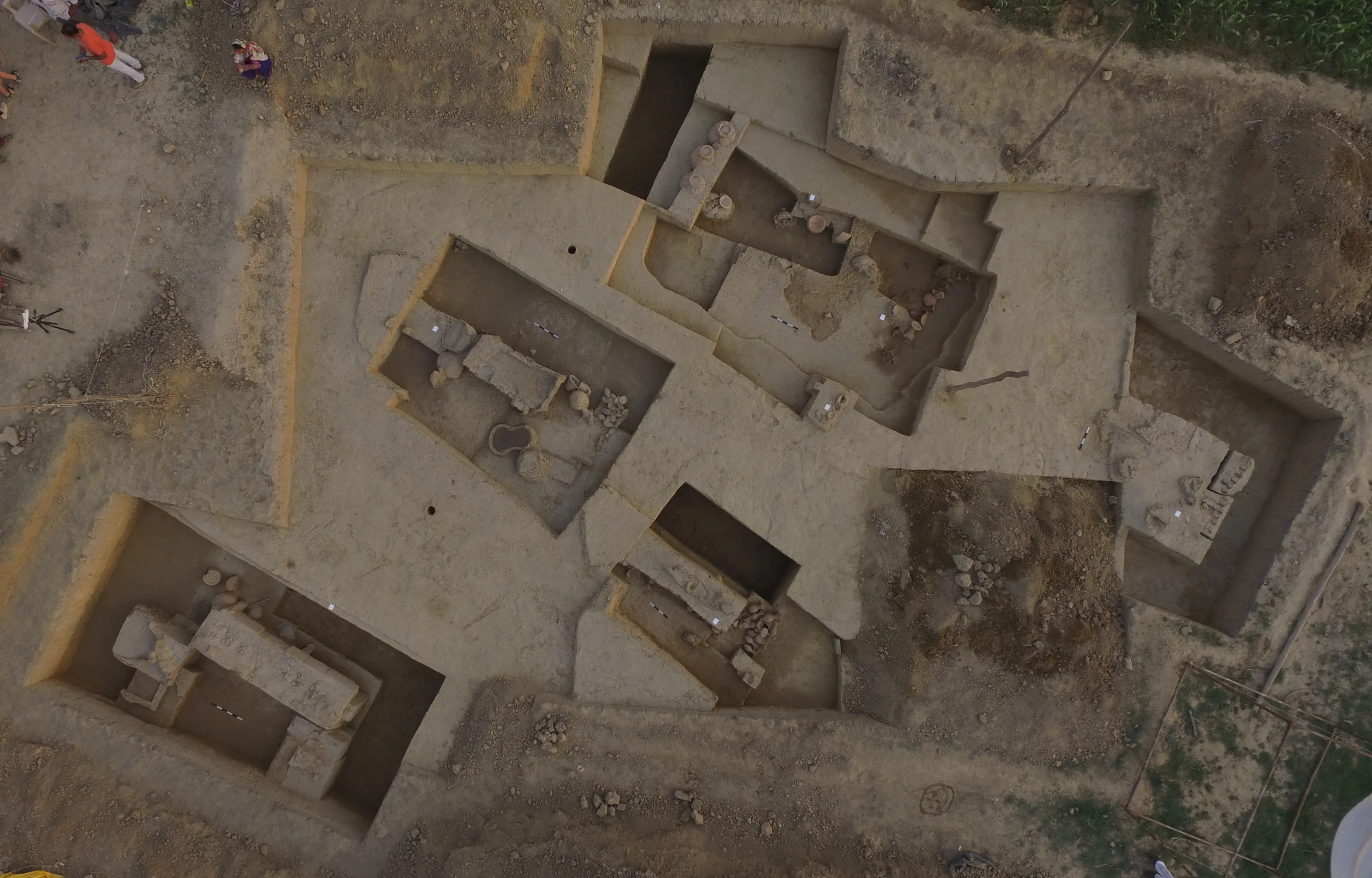Archaeological excavations at Sinauli in Uttar Pradesh, India, have uncovered a significant 4,000-year-old site, revealing the first-ever discovery of war chariots in the Indian subcontinent. Linked to the Ochre-Coloured Pottery (OCP) culture, the findings include royal burials, advanced copper craftsmanship, and military artefacts.
In 2018, a team of archaeologists from the Archaeological Survey of India (ASI) made a groundbreaking discovery at the Sinauli site in Uttar Pradesh. The research was recently published in the Radiocarbon journal.
During excavations, the team unearthed an array of ancient artefacts, including war chariots, swords, and helmets, all of which date back approximately 4,000 years to 2000 BCE. This marked the first recorded instance of chariots being discovered on the Indian subcontinent.
The Sinauli site is located in the Ganges-Yamuna doab and has been under excavation since 2005. The site revealed a necropolis with over 120 burials. The discovery of opulent burial goods found in several graves suggests the burials of high-status individuals, possibly warriors or leaders. The most remarkable of these discoveries was the unearthing of three complete war chariots. These chariots were adorned with copper geometric designs, such as copper triangles on the wheel spokes, highlighting the advanced craftsmanship of the OCP culture, which flourished between 2000 and 1500 BCE in northern India.
This discovery places the OCP people alongside other ancient civilizations such as Mesopotamia and Greece, where chariots were used for warfare during the same period. Notably, most of the wooden artefacts discovered at Sinauli were coated with copper sheaths and inlays, which preserved them for nearly 4,000 years. The chariots, along with other relics like copper helmets, antenna swords, and highly decorated coffins, suggest that Sinauli was a major military and cultural centre during the Chalcolithic period.
One of the most significant burials found at Sinauli was that of a high-ranking individual, likely a military leader, as evidenced by the extravagant artefacts found with the burial. These included two complete chariots, decorative staffs, an ornamented whip, and numerous pieces of gold and steatite beads. The individual was buried in a wooden coffin adorned with copper anthropomorphic figures wearing double-horned helmets and sacred fig leaves. The opulence of this burial indicates that the people of the OCP culture believed in an afterlife and held their military leaders in high esteem.
Radiocarbon dating of the artefacts, including wooden remnants from the coffins and chariots, confirmed their age, placing the site in the transitional phase between the Copper and Bronze Ages.
This discovery challenges previous assumptions about the OCP culture, suggesting that it was more advanced and militarized than previously believed. The presence of chariots and weapons indicates that the people of Sinauli were likely involved in territorial disputes and possibly interacted with other contemporary cultures, such as the Indus Valley Civilization.
The Sinauli site has also revealed non-elite burials, including those of animals, which are believed to have symbolic or ceremonial significance. These findings provide a deeper understanding of the social structure of the OCP culture, indicating that while some individuals were buried with great wealth, others had simpler or even hurried burials.
Overall, the discoveries at Sinauli, particularly the war chariots, offer new perspectives on the military and cultural history of the OCP culture in northern India, positioning them alongside other major ancient civilizations and reshaping our understanding of this region during the Copper Age.
